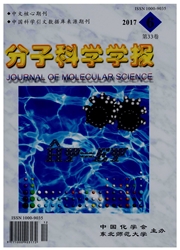

 中文摘要:
中文摘要:
纳孔分子材料是由孤立分子通过非共价相互作用堆积形成的具有纳微孔道结构的材料.和传统共价网络孔材料相比,纳孔分子材料具有独特的溶解性,并兼具气体存储与分离,限域反应和催化等方面的潜在应用,已成为当前研究的新热点.通过着眼于新型纳孔分子材料的设计,对相关理论研究进行了综合评述,主要包括以下3个方面:(1)无论是气体吸附还是催化反应,纳孔分子材料的晶体结构预测都是先决条件,只有在纳孔分子材料的晶体结构得到准确预测的前提下,才能够定向、准确、系统地对其进行设计;(2)气体在纳孔分子材料中吸附的分子动力学研究有助于深刻理解气体吸附的微观传输扩散机制;(3)气体在纳孔分子材料中吸附的巨正则蒙特卡洛模拟有利于对设计材料的吸附性能进行直接预测,得到可以直接与实验吸附量、吸附热等信息进行比较的结果.最后,简述了理论设计新型纳孔分子材料存在的问题以及未来发展前景.
 英文摘要:
英文摘要:
Nanoporous molecular materials are composed of discrete molecules between which there are only weak noncovalent interactions. Such materials are quite rare compared to porous network materials. They combine nanoporosity with the ability to be dissolved and then reassembled in appropriate solvents. With the aim to design novel nonaporous molecular materials, this work reviewed the recent theoretical investigations about the materials. Three aspects are included. (1) the crystal prediction is the fundamental step for developing a material no matter gas adsorption or catalysis reaction; (2) the Molecular Dynamics concerning gas adsorption is a key role for deeply understanding the guest transfer and diffusion. (3) the grant canonical Monte Carlo simulations are able to predict gas uptake and the heats of adsorption (Qst), which can be compared directly with experimental data, and therefore offer an alternative way to laborious experimental work. And finally, the major issues and future are briefly discussed.
 同期刊论文项目
同期刊论文项目
 同项目期刊论文
同项目期刊论文
 期刊信息
期刊信息
